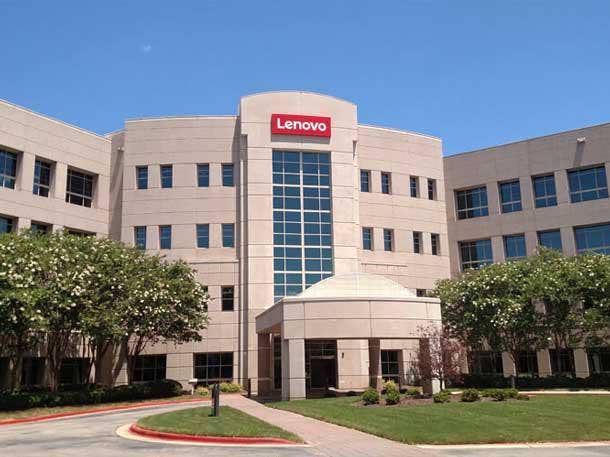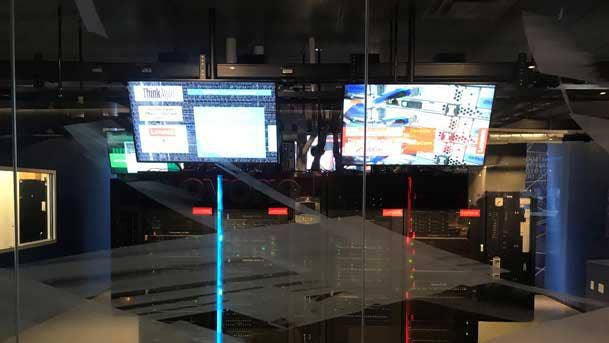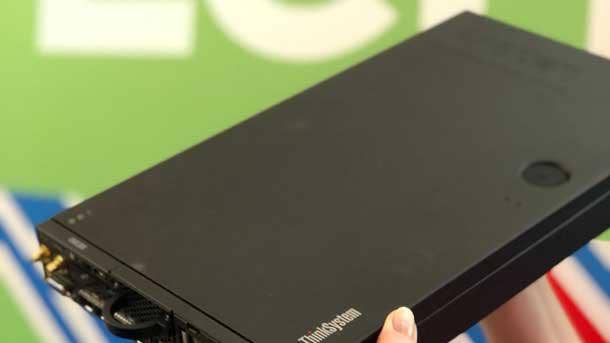5 Reasons Why Lenovo's Data Center Group Is On Fire
New executives, products and go-to-market strategies – CRN breaks down five reasons why Lenovo’s Data Center Group is working.

Momentum Behind Lenovo’s Data Center Group
Lenovo’s Data Center Group has been doubling down significantly on its data center innovation and go-to-market strategy at the start of 2019.
The Hong Kong-based company, with U.S. headquarters in Raleigh, N.C, is hiring new leaders to drive channel sales, launching innovative selling models and reporting stellar growth in data center revenue.
“When we set out on our journey of Intelligent Transformation, our goal was to restore and then accelerate Lenovo’s business momentum, while providing our customers and partners with the best technologies in smart IoT, smart infrastructure and smart vertical solutions. We’ve done exactly that and more,” said Yang Yuanqing, Lenovo chairman and CEO during the company’s third fiscal quarter earnings call last week. “We’re strong, have delivered record-breaking results this quarter and are only getting stronger.”
CRN breaks down five reasons why Lenovo Data Center’s Group is off to a great start this year.

Hires New Global Channel Chief And Sales Leader
This month, Lenovo hired two new leaders tasked with driving worldwide channel and North America sales for the company’s data center business.
Nicole Roskill (pictured) was selected as the new director of Global Channels for Lenovo’s Data Center Group task with improving Lenovo’s global partner strategy around program consistency, incentives and services. Prior to joining Lenovo, Roskill was vice president of emerging channels and integrated solutions at Avnet, responsible for the global distributors’ strategy and sales execution for hundreds of partners in the Americas. Roskill began her career with a 12-year stint at IBM from 1997 to 2009 with roles including director of Healthcare Solutions and Business Development.
Lenovo also recently hired Kevin Hooper as president of North American Data Center Group sales. Hooper has years of vice president and top executive experience working for the likes of Hewlett Packard, IBM, Oracle and NEC’s Enterprise business, including the title of director of worldwide channel marketing and enablement at IBM. He also spent a year as chief revenue officer for Rogue Wave Software.

Lenovo’s Innovative TruScale Consumption-Based Selling
In a game-changing way to how it sells data center solutions, Lenovo created TruScale Infrastructure Services, which is a consumption-based, infrastructure as-a-service offering. TruScale is a pay-for-what-you-use subscription for data center solutions based on electrical consumption which allows customers to use and pay for on-premise data center hardware and services without having to purchase the equipment. Customers never take capital ownership of the hardware or other IT assets with no minimum capacity requirement for TruScale.
“There’s a lot of models in the industry that tend to be much more leased-based, but this is not a lease,” said Roderick Lappin, former senior vice president and chief customer officer for Lenovo’s Data Center Group in a recent interview with CRN. “When we designed our server infrastructure, we put a chip on the motherboard of every single piece of equipment we sent out there running analytics on electrical consumption. If you talk to a CIO, the No. 1 cost of running a data center these days is electricity. It’s electricity running the infrastructure, running the air condition and cooling solutions. What we’re doing is building a subscription model that allows the CIO to be able to see an electrical consumption model invoiced monthly based on how they’re using the equipment.”
The metering solution is based on power consumption with TruScale remaining outside the customer’s data plane, which produces cloud-like economics with the security of on-premise hardware. TruScale includes a real-time dashboard that provides usage, billing and e-ticketing services to help control and predict costs.

$1.6 Billion Data Center Sales
For its third fiscal year 2019, which ended Dec. 31, 2018, Lenovo’s Data Center Group (DCG) reported its fifth consecutive quarter of profit growth with revenues totaling $1.6 billion, an increase of 31 percent year over year. The growth was across all geographies, highlighted by triple-digit growth in North America. Software-defined data center infrastructure revenue for DCG grew nearly 70 percent year over year, while hyperscale sales increased triple digits.
Lenovo said DCG sales benefitted from the strategic partnership it formed last year with NetApp aimed at taking share from the competition. The company’s flagship data center solutions are its ThinkSystem and ThinkAgile architectures.

The New ThinkSystem SE350 Edge Server
Lenovo recently unveiled its first purpose-built edge server designed to live outside the traditional data center with the ThinkSystem SE350. The small, compact server is roughly the size of a notebook and can be mounted on a wall, shelf or rack. The product is based on Intel’s Xeon-D processor that includes 256GB of RAM and 16TB of internal solid-state storage. It also includes encrypted storage and physical security features including tamper-detection mechanisms.
The ThinkSystem SE350 puts increased processing power, storage and network closer to where data is generated, allowing for data analytics actions to take place more quickly. Although only 10 percent of enterprise-generated data is created and processed outside a traditional data center or cloud today, Gartner predicts that figure to increase to 75 percent by 2022. The SE350 is set to become generally available this summer.

Momentum Driving Partnerships
With a focus on the Internet of Things and edge, Lenovo is rigorously building strategic partnerships to drive market expansion.
Lenovo is working closely with VMware on Project Dimension to simplify the delivery of infrastructure as-a-service to on-premise locations such as the edge. Lenovo’s Data Center Group has also established a partnership with Orange focused on hardware composability using Intel Rack Scale Design to maximizing performance and cost efficiencies by pooling and abstracting hardware resources in edge deployments.
On the IoT front, Lenovo is teaming with hyper-converged infrastructure and video surveillance vendor Pivot3 to drive smart city capabilities and deployments. Finally, Lenovo is also working with hyper-converged infrastructure vendor Scale Computing to enable retail customers to deploy mini data centers that offer enterprise class solutions at the edge of their networks.
“There is tremendous opportunity to help customers realize the power that edge computing can bring to their organizations,” said Kirk Skaugen, executive vice president at Lenovo and President of Lenovo Data Center Group in a statement. “We’ve made significant focused investments in our IoT and Telco offerings over the past year with several strategic partners, enabling connectivity from edge to data center.